Washington-Lee High School History: 1960 – 79
Milestones
In the 60s and 70s, W-L reached new academic and athletic heights, as its reputation continued to grow both nationally and internationally. Integration was successful—student-driven in many respects. W-L became a model for other high schools across the state. The 60s was also an era of growing student activism at W-L. Students formed groups like Social Action for Equality, joined protests against censorship by the administration, joined the anti-freeway protests, and participated in civil rights sit-ins. A direct result of student activism, W-L offered one of the first high school level Black Studies courses in the country. An experimental high school program, Woodlawn, began accepting students in 1971. (It continues to operate today as H-B Woodlawn, currently located in Arlington’s first urban-style school building, designed by Danish firm Bjarke Ingels Group in 2018.)
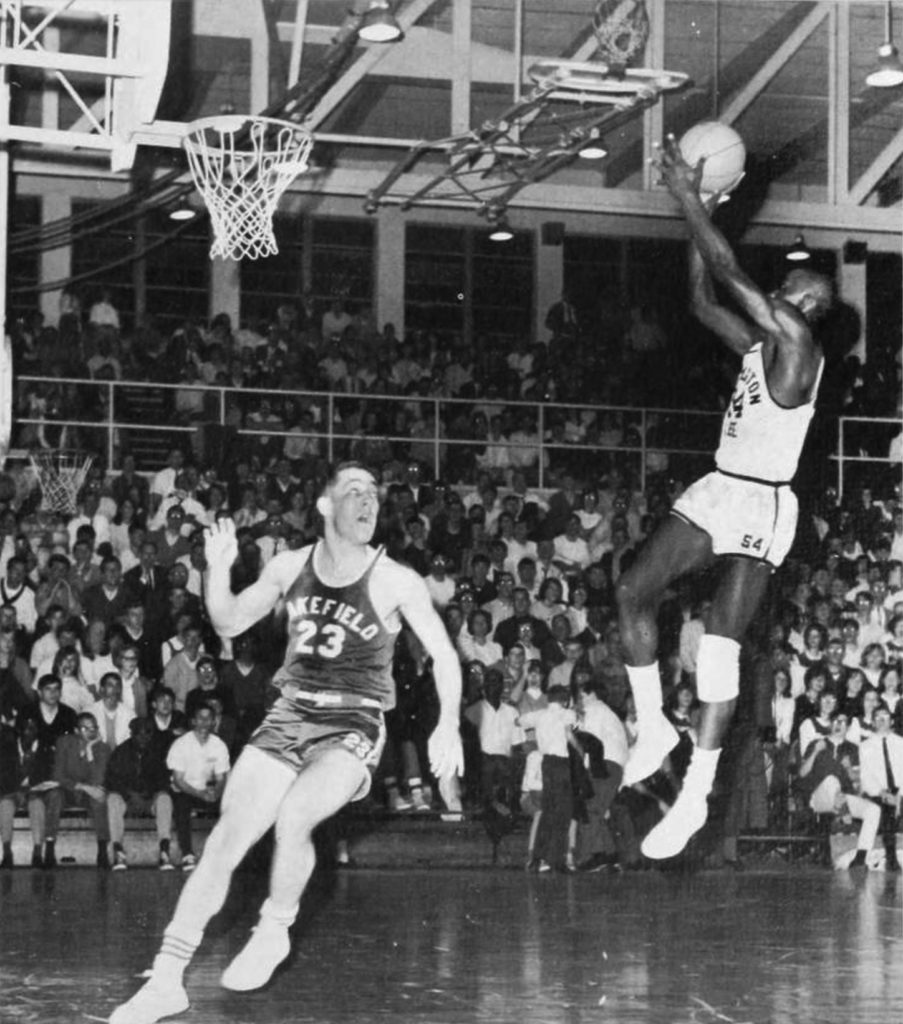
2,500 fans fill Campbell Gymnasium to watch W-L play Wakefield in 1966. W-L went on to win the state championship that year as the first integrated team. Co-captain Tyrone Epperson takes aim at the Wakefield goal.
- In the 60s, Time Magazine named W-L the second best public high school in the nation.
- Desegregation of seating at school athletic events (1961)
- First year of integrated sports (1961-1962)
- New auxiliary gyms (1962)
- The School Board bans school-affiliated sororities.
- W-L continues to expand its AP course offerings.
- The science wing was expanded (1964, 1969)
- A plaque of the busts of Washington and Lee, designed by W-L graduate Mike Saunders, was installed above the N Quincy Street Entrance (September 1964 Crossed Sabres). It was moved to the courtyard of the current building in 2008.
- In 1964 the soccer program began under Coach Del Norwood providing interscholastic sports opportunities for the school’s growing international population. Del Norwood also coached baseball and led both sports programs to multiple district and regional titles.
- The 1966 state championship basketball team, the first integrated championship team, symbolized the spirit of unity at the school. W-L was a model for schools throughout Northern Virginia.
- First ESOL (English for Speakers of Other Languages) classes for the growing immigrant population at W-L and Stratford Junior High (1967)
- The “White House,” which housed the SCA, Blue and Gray, Crossed Sabres, and Penman staffs, was torn down (1968).
- A modern education center and planetarium were built.
- Experiment in Free Form Education (EFFE) begins in 1969.
- A new, air-conditioned 2-floor library was built (1970).
- A new swimming pool, adjacent to Campbell Gymnasium, opened for student and community use (1973).
- Open campus policy for all grades (1974)
- The Career Center opened (1975)
- W-L 50th anniversary (1975)
- Longtime principal Mr. O. U. Johansen was fired by the school board (1975). He later won an age discrimination lawsuit, and become chair of the school board.
- U.S. Bicentennial celebration and a year of transition for W-L, as Dr. William Sharbaugh took over and new educational models were tested (1976)
- The controversy over Christmas door decorating and the separation of church and state came to the forefront (1978 Blue and Gray).
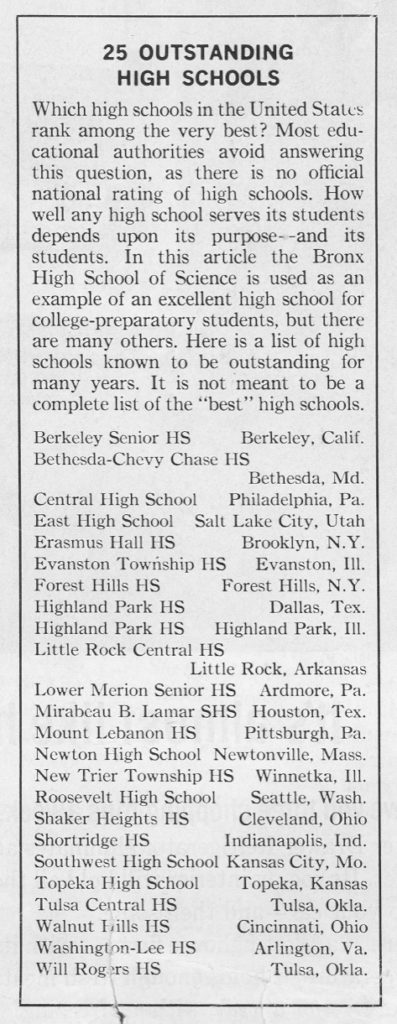
W-L was listed among the nation’s elite high schools in the April 1963 issue of the Ladies Home Journal. Nearby B-CC High School also made the list.
Academics
Time Magazine ranked W-L as the #2 high school in the nation in the 60s. Along with nearby Bethesda-Chevy Chase HS, the other top local public high school, W-L’s academic and athletic accomplishments continued to gain international recognition. It’s reputation helped to draw top talent from around the country for open faculty positions. Peggy Jeens (Social Studies), John Harocopos (English), Stan Book (Social Studies), and other teachers who were hired in the 60s remained with the school for close to 40 years.
In the 60s, the Staff Council, students, and student-led groups like the Black United Front pushed for curriculum changes and new programs. Peggy Jeens, a then new member of the social studies faculty, was given the challenging task of teaching one of the first high school Black Studies courses in the country in 1967. Student activism pushed for the creation of the half credit class at W-L and subsequently advocated for a full-year, full-credit course. There were no textbooks on the subject at the time; pamphlets and miscellaneous books were used. (Mrs. Jeens retired in 1998.)
In 1966, W-L faculty developed the first classes for English Learners, the first such classes in the state, and among the first in the country following The Immigration and Nationality Act of 1965. Longtime W-L government teacher Stan Book taught the Social Studies for Foreign Born beginning in 1966. Roughly 11% of the school’s population represented other countries.
Beginning in 1969, the Experiment in Free Form Education (EFFE) program explored new modes of learning outside of the traditional classroom setting. The student and faculty led initiative lasted for a few years. In the decades that followed, the H-B Woodlawn Program (currently a 6 through 12th grade school program) expanded on that legacy.
In the mid-70s the school board approved radical changes for the school’s campus and program that were opposed by most parents, students, the faculty, and school administration. The Crossed Sabres covered this tumultuous period at the school, capped by a staff and student led lawsuit in support of the principal, Mr. Johansen.
The fight over traditional vs. progressive pedagogies and a new high school building: Despite overwhelming support for a renovation by noted Chicago architecture firm Perkins and Will, the school board voted to demolish the historic school in 1975. The board had embraced new, flexible learning environments that eschewed classroom walls, a somewhat controversial view at the time. Community stakeholders, with the architect, proposed an open-classroom design that would have preserved the school’s facade and it’s ornate auditorium, an Arlington landmark for 50 years. Viewed by many faculty and students as an affront to the school’s legacy, the board voted to demolish the main section of Washington-Lee (built in 1924) in 1975. According to editorials in the 1975 Crossed Sabres, the firing of the principal was a deliberate distraction designed to divert attention away from the controversial building plans. In 1976 a smaller, less stately building designed by Ward Associates was built by on the site of the old building, demolished in phases. The new, open-space instructional environment was organized by department. Initially, the new building lacked a cafeteria, auditorium, and landscaping due to a funding shortfall. Temporary “walls” were hastily erected, due to the impracticalities of the open design. The decision to demolish W-L has been controversial ever since, with most regretting the loss of an attractive and historic civic landmark. The original bronze lettering that spelled out the school’s name above the main entrance was the only remnant of the 1924 building that was preserved. (W-L’s Crossed Sabres and books on educational design by architecture firm Perkins and Will document the initial renovation plans and the subsequent events.)
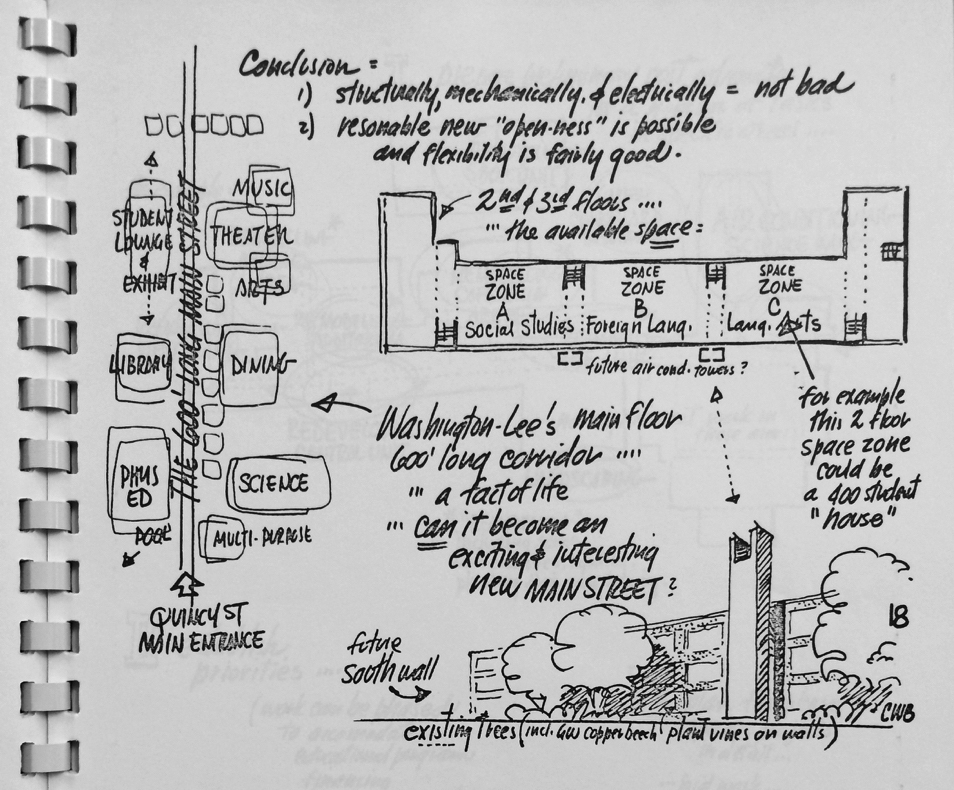
Chicago architecture firm Perkins and Will, led by award-wining schools architect C. William Brubaker, worked with the W-L community on renovation concepts. One idea illustrated here sought to highlight W-L’s unique 600 ft long hallway and make it the center of activity—a new “Main Street.” (Document prepared by Perkins and Will in 1972. Virginia Room, Arlington Central Library)
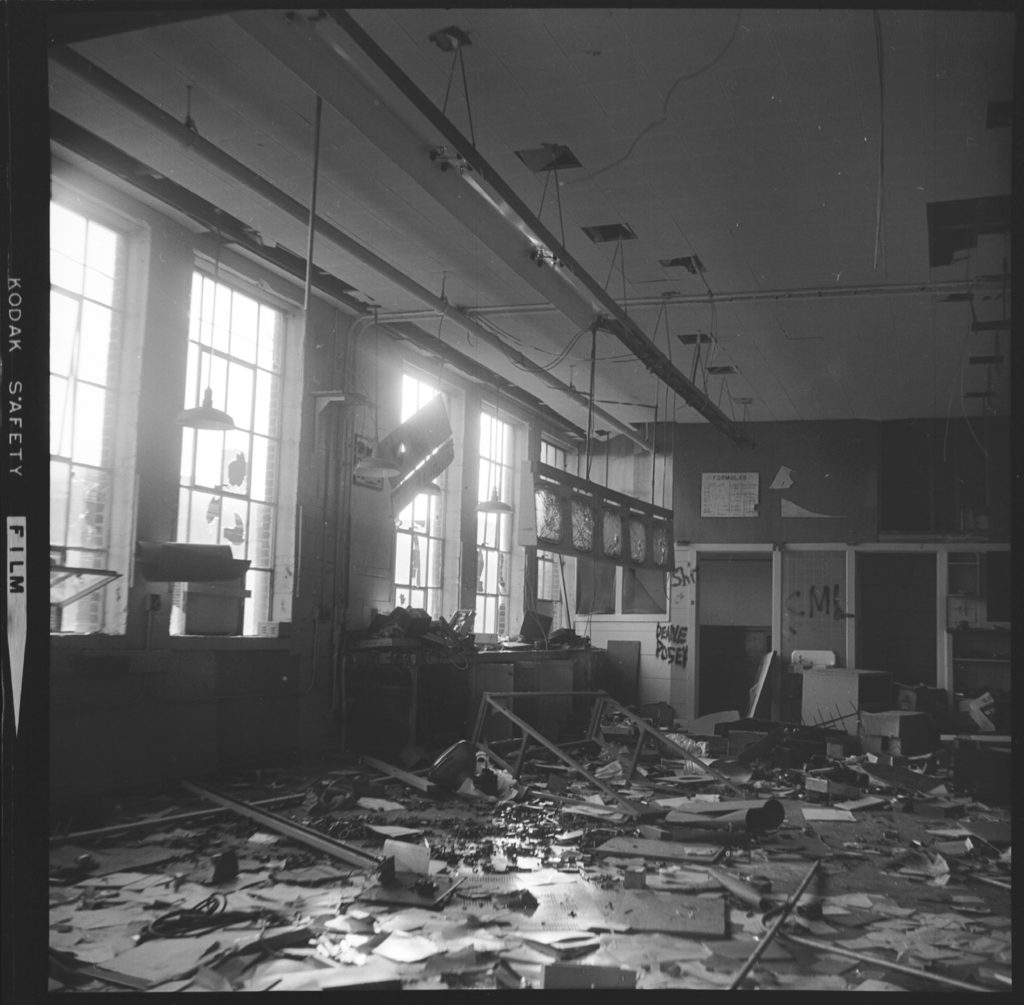
1975 demolition of Industrial Education building after renovation plans were rejected by the School Board. (Photo by Jay Dunn, W-L/Woodlawn ’75)
Principals: Mr. B. T. Norris from 1958-1961, Mr. O. U. Johansen from 1961-1976, Dr. William Sharbaugh from 1976-1999.
Students and Faculty
According to the Crossed Sabres, W-L had the largest international population of any high school in the state. Approximately 11% of the school’s population represented as many as 32 different countries from Latin America to Asia. Along with neighboring Stratford Junior High School, W-L first offered classes for English learners in 1967, the first high school in the state to do so. Student activism and faculty initiatives lead to the creation of one of the first Black Studies courses in the nation and programs with guest speakers such as Marion Barry, Dr. Benjamin Spock, and poet William J. Smith.
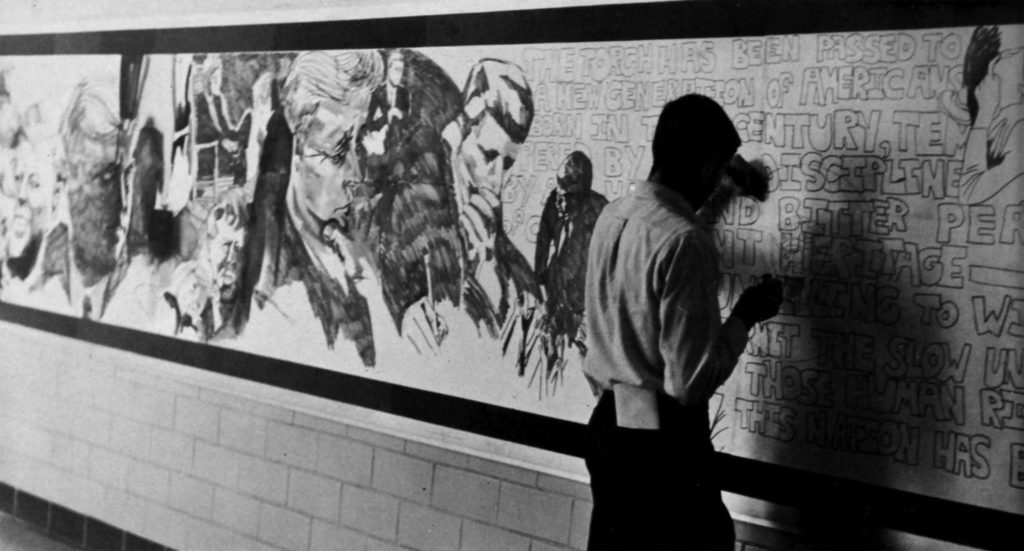
Jon Friedman, W-L ’65, completes his mural that marked the one year anniversary of JFK’s death (1965 Blue and Gray). The mural has become a distinctive feature of W-L over the years. It was restored with the help of the Friedman family and the W-L Alumni Association in 2008.
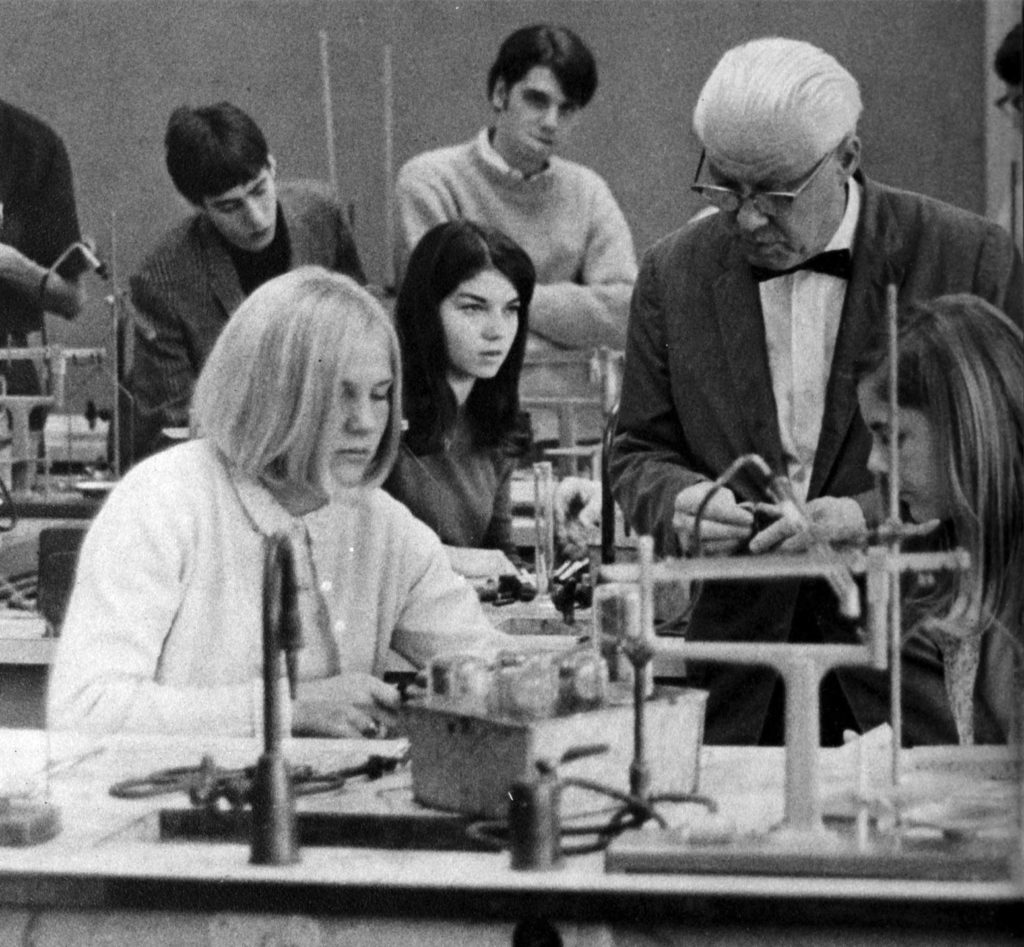
Mr. Thomas Christie assists students in his science class (1968 Blue and Gray). Holly Hawthorne, W-L ’68, the current principal of Arlington Traditional School, is among the students pictured. Mr. Thomas M. Christie and Miss Mabel Allen were the two longest serving members of the W-L faculty.
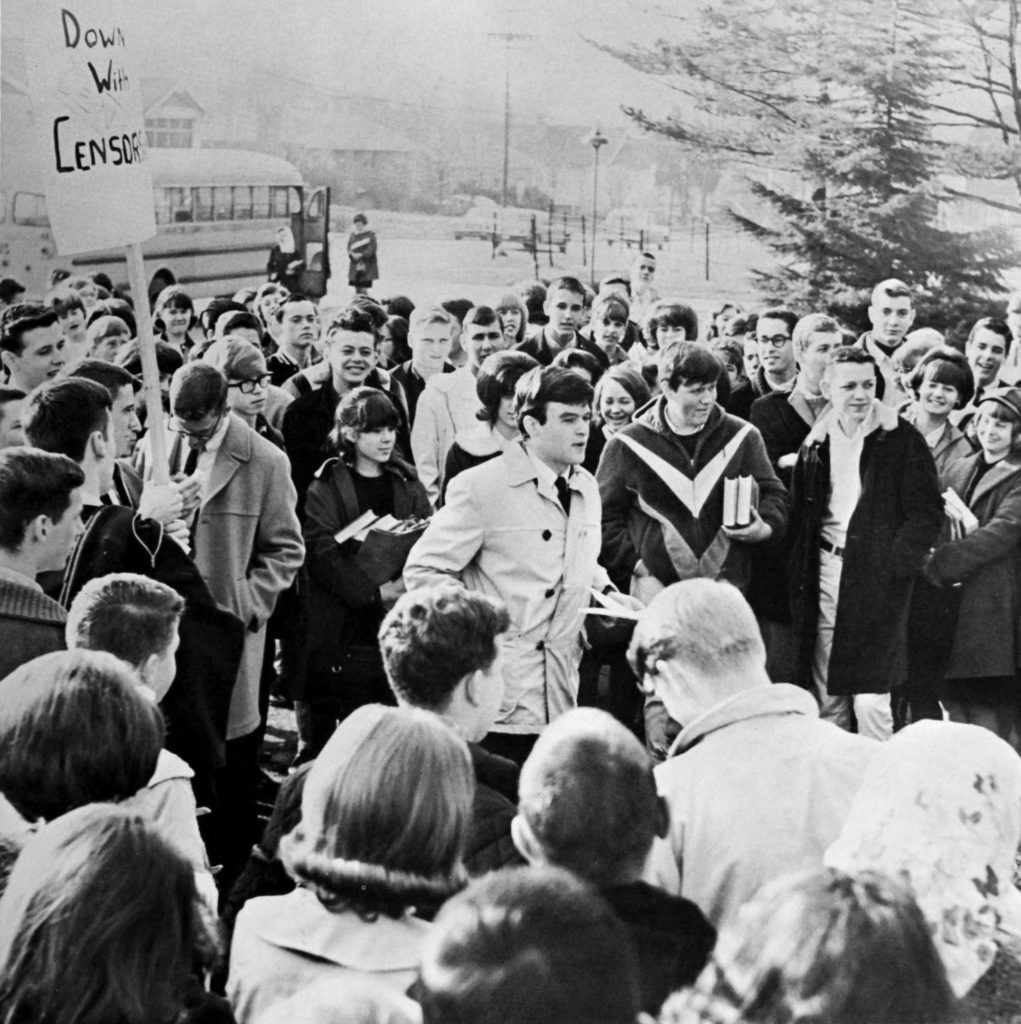
Washington-Lee students protest censorship (1965 Blue and Gray).
English teacher John Harocopos was the faculty advisor for the Penman literary magazine from the 60s until retirement in 1999. During his tenure, The Penman received numerous awards from the Virginia High School League, the Southern Interscholastic Press Association, and the Columbia Scholastic Press Association.
Mr. Harocopos once recalled that he had two interviews for teaching positions, one at W-L and the other at New Trier High School in Winnetka, Illinois. W-L and New Trier were widely regarded as the top two high schools in the nation at the time. However, upon entering W-L at the N Quincy Street entrance, he was captivated by the incredibly long, 600 ft main hallway. (School architecture, often an afterthought, does have the power to inspire.) He accepted a teaching position on that day in 1961.
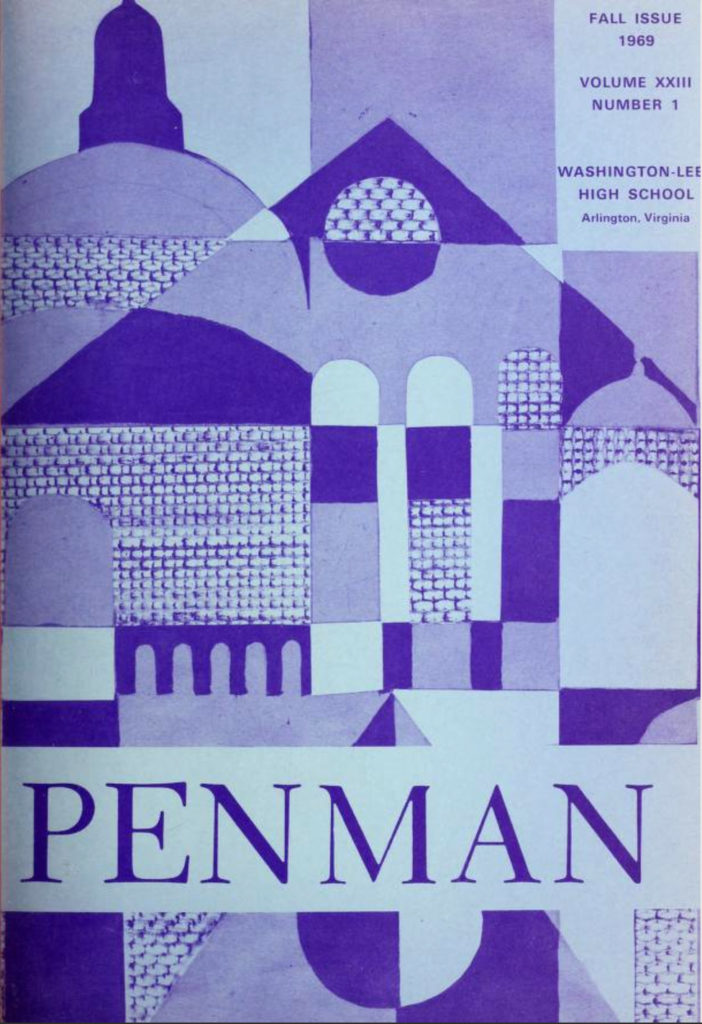 Penman, W-L’s award winning literary magazine (Fall 1969 issue) |
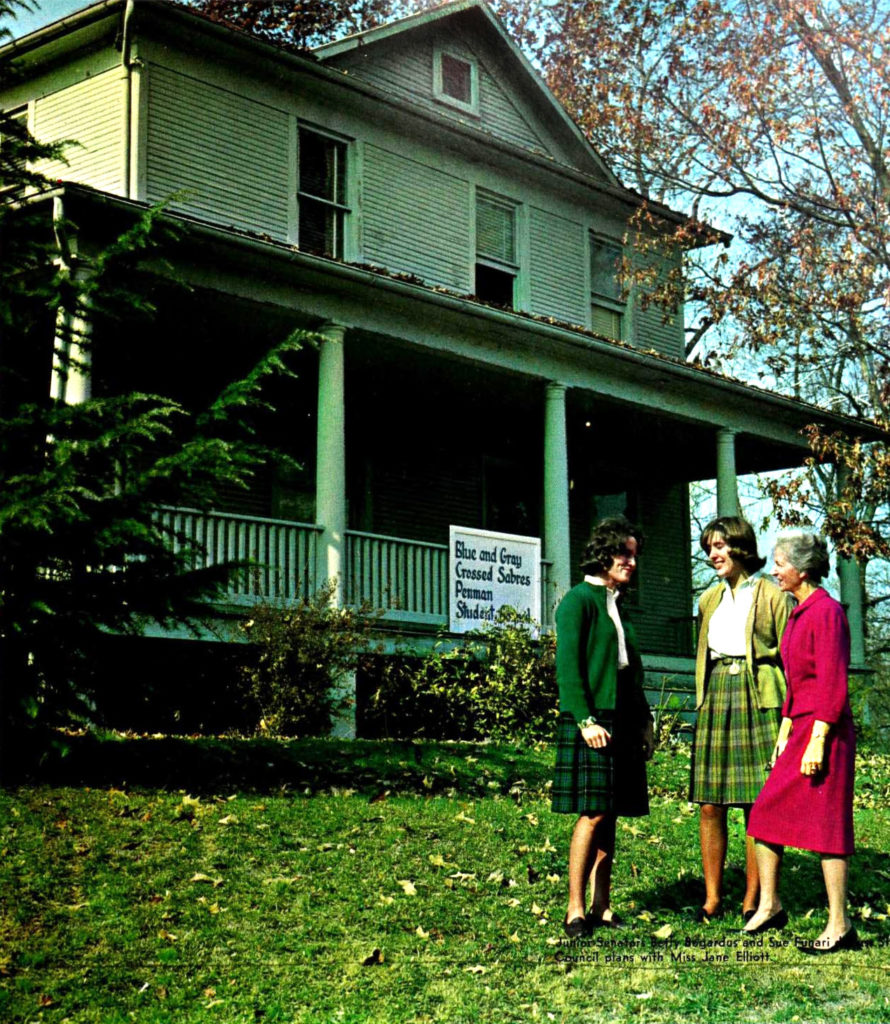 The “White House” housed the school’s publications staff and the student government. Student Council sponsor Miss Jane Elliot is in the red dress. (1965 Blue and Gray) |
In 1962, Miss Sally Loving retired and began writing 35 year history of the school.
Traditions
“Arrival of class rings in May heightens the junior’s anticipation of their approaching senior status. Seniors place the rings on the juniors’ fingers in a traditional gesture for good luck. Seniors sport green and white beanies for a week, both inside the building and out. The end of May finds the Junior Class attending its annual prom.” — The Generals’ Aide student handbook
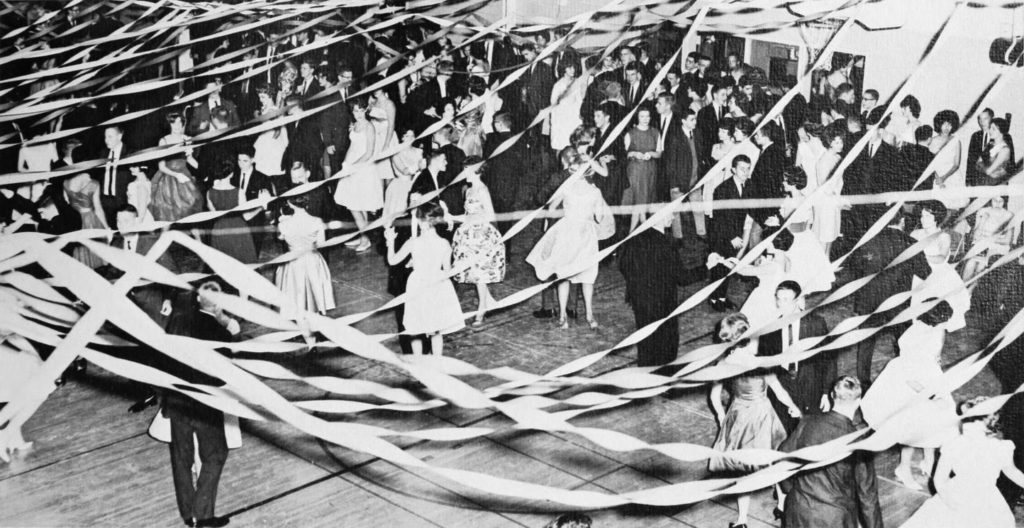 Turkey Hop (1963 Blue and Gray) |
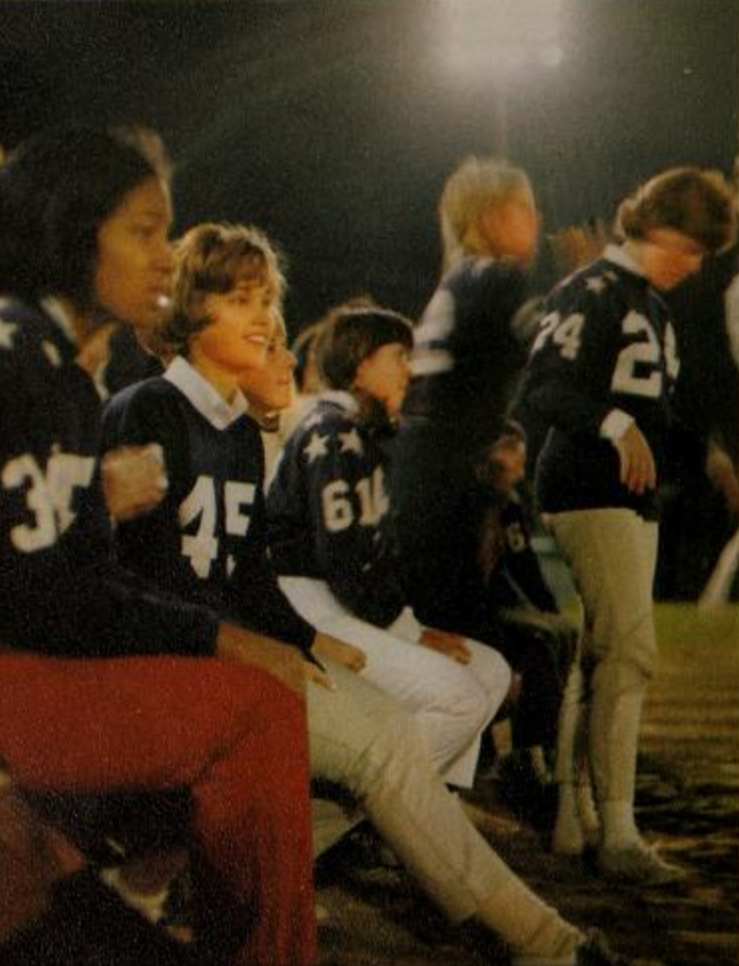 Powder puff football (1966 Blue and Gray) |
- College Night
- Leadership Training Conference
- Bonfires before the G.W. game
- Senior flag raising over senior court
- Penman Popcorn
- The Turkey Hop/Homecoming dance (see photo)
- Early morning announcers
- Senior Class sponsored Thanksgiving Assembly
- Christmas alumni reception
- Christmas door decorations
- Student Council Christmas post office
- Christmas Vesper and Candlelight Concerts
- Domestic exchange program
- Senior High Music Festival
- Crew dances at the Potomac Boat House
- The National Beta Charity Ball and the presentation of Miss W-L
- Sophomore-Faculty Basketball Game
- Junior-Senior rivalry
- Sophomore Class sponsored Easter assembly
- Novelty Week and Sadie Hawkins Dance
- Junior Prom, Senior Prom
- Annual Awards Assembly
- Baccalaureate Service
- Commencement (Arlington War Memorial Stadium, weather permitting, or Campbell Gym)
Class Officers
- Senior Class Presidents: 1960-Jeff Lang, 1961-Terry Brown, 1962-Mike Omohundro, 1963-Bob Cocker, 1964-Gregg Hanson, 1965-Jack Loder, 1966-Steve Plott, 1967-Ken Matts, 1968-Jack Fleming, 1969-John Midgett, 1970-Micheal Owens.
- SCA Presidents: 1960-Carl Estabrook, 1961-Bill Breitweiser, 1962-Matt Harrison, 1963-Bill Casey, 1964-Bob Meyerson,1965-Briuce Jolly, 1966-Phil Bjorlo, 1967-Jim Almand, 1968-Steve Raish, 1969-Richard Blewett, 1970-Alvin Horton.
Famous Alumni
Keith Campbell ’64, Stan Winston ’64, Jon Friedman ’65, Steve Buckhantz ’73
Trends
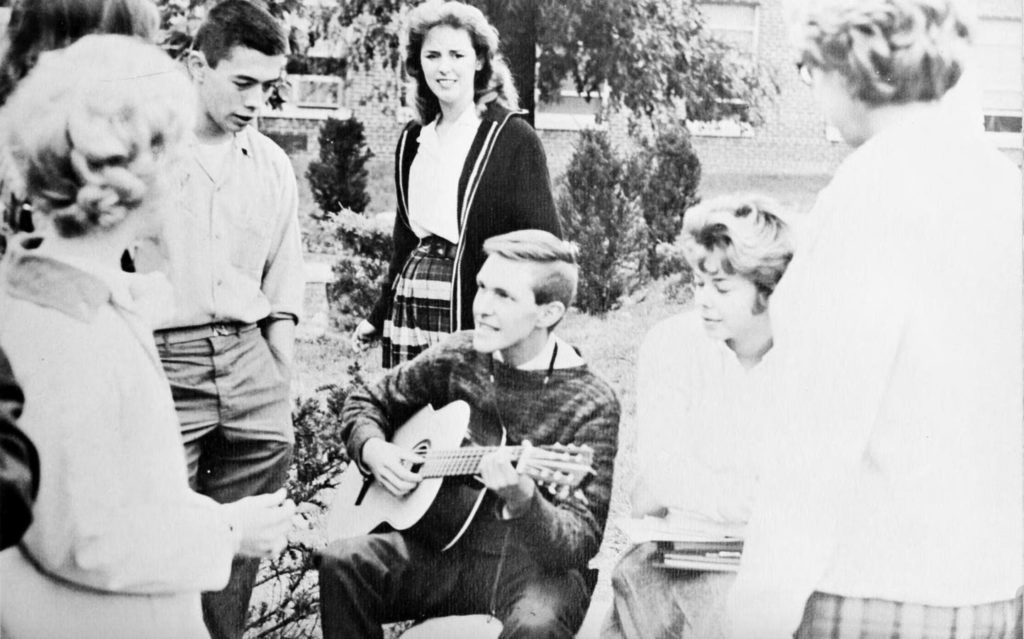 Folk music in senior court |
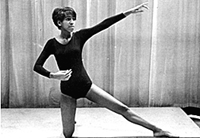 Modern dance club |
- Folk Music
- The Way Coffeehouse provided a “psychadelic” atmosphere in the 60s.
- Tops Drive Inn and Hot Shoppes
- Cherry Smash
- Clarendon
- Drag racing on H Road
- In the 60s, courtesy of WLNS (Washington-Lee’s New Sound), contemporary music was pumped into the cafeteria.
- The Ventures, the Beach Boys, the Beatles, Bob Dylan, Led Zepplin, Simon and Garfunkel, Boston, et al.
- The Modern Dance Club was organized.
- Casual Corner and Hecht’s in Parkington had the latest fashions in the 60s. (Ballston Quarter will open on the site of Parkington in 2018. As of 2017, the former Hecht’s is a Macy’s department store.)
Sports Traditions
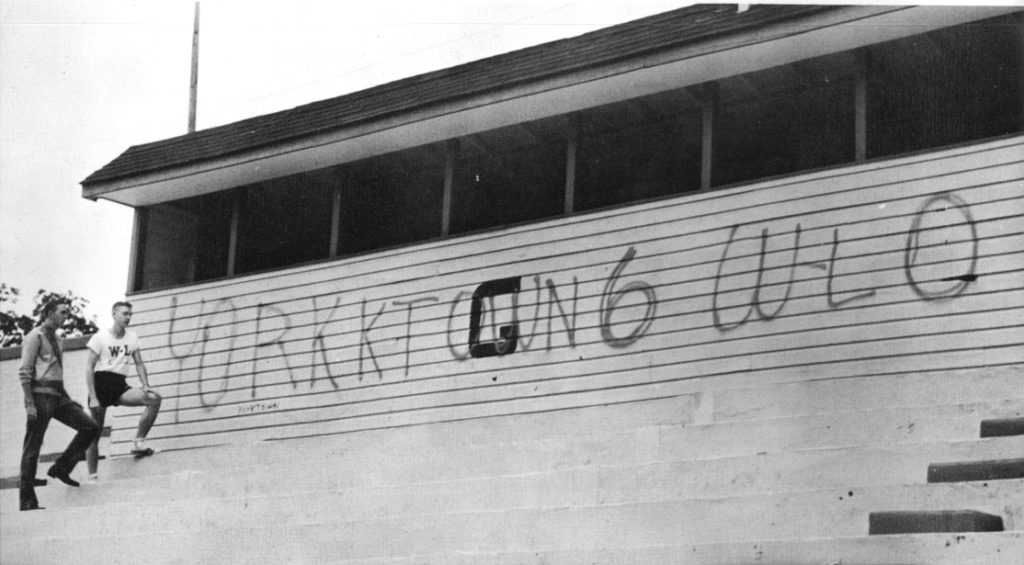
Yorktown students vandalized the press box the night before the big rivalry game.
The W-L -Yorktown Game (football): When Yorktown opened in the 1960s, many North Arlington neighborhoods in the W-L attendance area were transferred to the new Yorktown High School. This created a rivalry unmatched in the DC area. The W-L/Yorktown game quickly became the most important of the football season. The night prior to the game Yorktown students would vandalize the W-L pressbox. Since 1983, the game has been the last of the regular football season.
The 1963 Old Oaken Bucket Game: For the first time in W-L history, WMAL TV, DC’s ABC affiliate, televised the annual Thanksgiving Day game against G.W.
- W-L/GW rivalry: G.W. students assault W-L students (Jan 26, ’68 Crossed Sabres).
- The Fort Myer Band would play at halftime shows.
- The Go Go Boys, dressed in ties and blazers, served as the exclusive cheering section for W-L at basketball games.
- Powder Puff touch football
- Swim and dive teams organized
- The Al Haringer Relays (1966-1982)
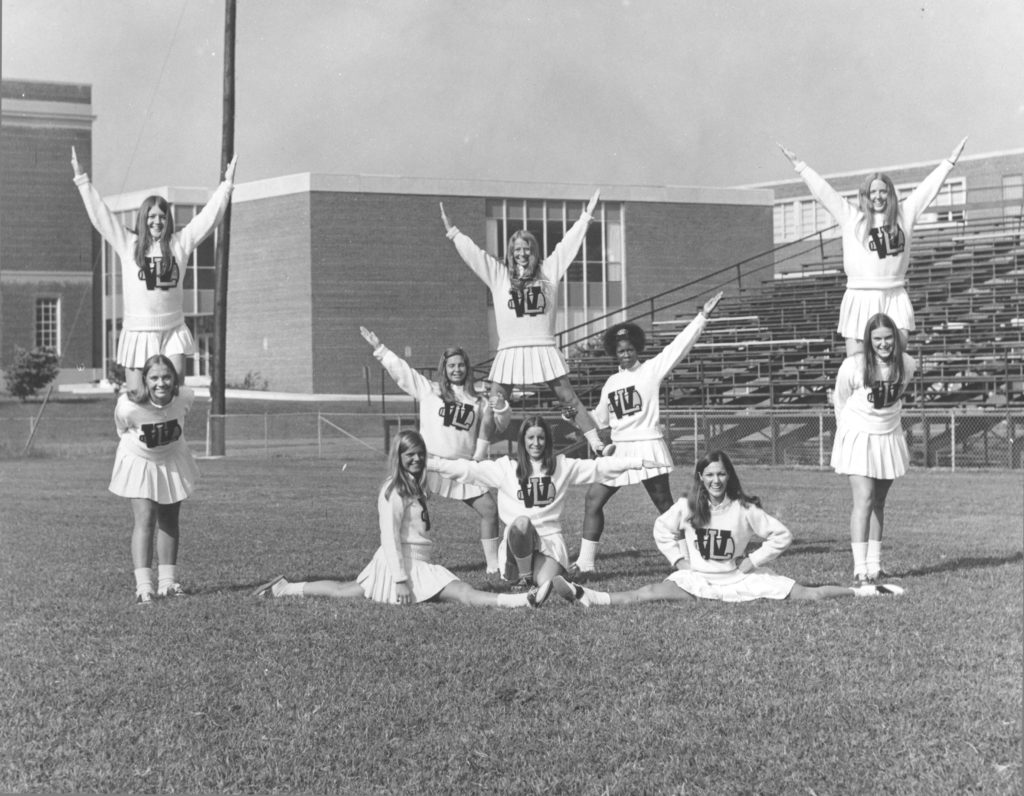
The 1972 cheerleaders in front of the library addition (photo courtesy of Cindy Schaler, W-L ’72)
Sports Titles
The 1960 state football champions, coached by legendary coach Youngblood, returned to W-L in 1997 to receive their championship rings.
District Titles
- Football: 1960, 62, 63, 66, 70, 75
- Cross Country: 1961, 62, 64, 68
- Girls Tennis: 1975, 76, 77
- Basketball: 1960, 62, 63, 66;
- Wrestling: 1960, 61, 62, 68, 71
- Girls Gymnastics: 1976
- Rifle: 1962, 63, 64, 66
- Indoor Track: 1960, 63
- Baseball: 1960, 61, 62, 63, 64, 65, 66, 67, 68, 69, 72, 73
- Track: 1961, 62, 63, 64, 65, 66
- Girls Track: 1975
- Boys Soccer: 1965, 66, 67, 70, 74
- Boys Tennis: 1960, 63
- Boys Gymnastics: 1971, 72
- Debate: 1963, 64, 67, 68, 69, 70, 71, 72, 74, 75, 76
Regional Titles
- Wrestling: 1962
- Girls Tennis: 1977
- Baseball: 1972, 77
- Boys Soccer: 1970, 72
- Boys Gymnastics: 1971
- Boys Cross Country: 1962, 64, 65
State Titles
- Football: 1960
- Cross Country: 1962, 64, 65
- Girls Tennis: 1977
- Basketball: 1962, 63, 66
- Indoor Track: 1960, 63
- Boys Gymnastics: 1971
- Debate: 1963,67, 68, 75
Crew
- World Champs (Henley): 1964, 69
- NOVAs: 1960, 61, 62, 63, 64, 65, 66, 67, 69, 70, 71
- Girls Crew (NOVAs): 1979
- Stotesbury: 1960, 62, 63, 64, 65, 66, 67, 69, 70, 71
- National Schoolboy: 1960, 61, 62, 63, 64, 66
 Contact
Contact  Calendars
Calendars Careers
Careers Engage
Engage  District
District
